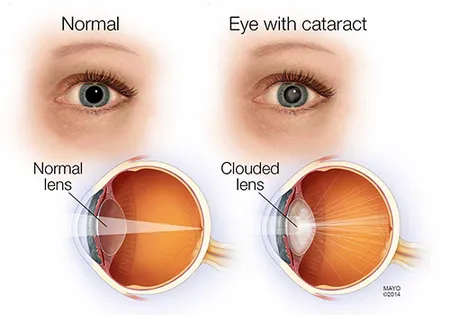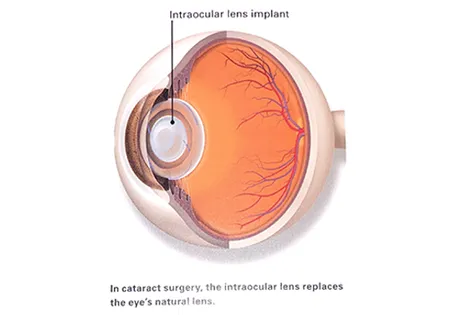A Cataract is a yellowing and clouding of the clear natural lens of the eye. As we age, the lens absorbs UV radiation and aging changes which cause the lens to become cloudy. Smokers and diabetics will tend to get cataracts at an earlier age. Wearing sun glasses with UV protection can slow down the development of cataracts. Over time, this causes our vision to be cloudy and more effected by glare. When this has progressed to a point where we can no longer correct vision with glasses then it may be time to consider cataract surgery.
Cataract surgery is an outpatient surgery. Cataract surgery is one of the most successful surgeries done in the United States. It is 98% successful at improving vision. It will not improve vision caused by retina(i.e. macular degeneration) or cornea disease. The actual surgery itself may only take 10 to 20 minutes, Typically you will be at the hospital or surgery center about 4-5 hours. At cataract surgery a small incision is made to remove the cloudy lens and is replaced by a fine plastic lens called an intraocular lens implant or IOL. Typically the doctor will see you in the office the day after, one week after and 5 weeks after cataract surgery. At 5 weeks the patient will usually receive a new prescription for glasses if needed.
Dr. Jonathan Buka , is a Board Certified Ophthalmologist and has performed over 10,000 cataract surgeries. He performs surgery at Christ Hospital, Tinley Surgical Center, Hinsdale surgical center and Munster Community Hospital. He does the latest, state of the art, surgeries using LenSx laser to breakup the cataract and uses Toric implants to correct for astigmatism. The LenSx surgery and Toric lens are not covered by most insurances and are optional. Whatever method is used, they should all give you excellent results


